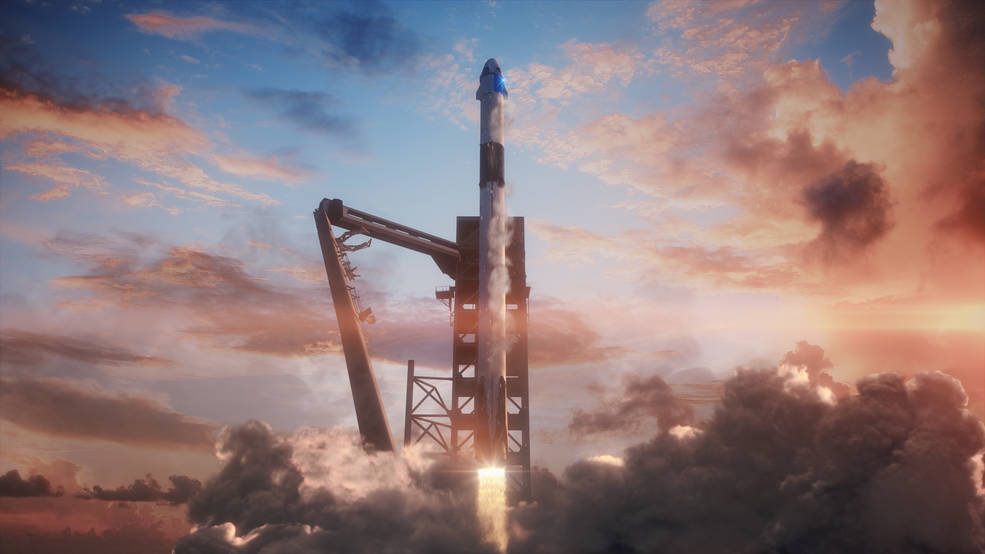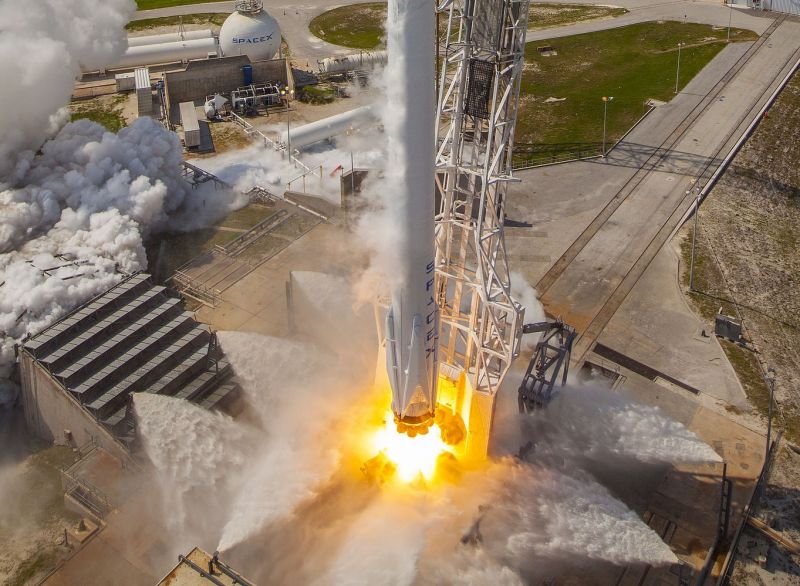In February 2022, SpaceX and entrepreneur/philanthropist Jared Isaacman (commander of the Inspiration4 mission) announced they were launching a new program to “rapidly advance human spaceflight capabilities” while supporting important charitable and humanitarian causes here on Earth. It’s called the Polaris Program. In a recent press release, SpaceX revealed the spacesuits its Polaris astronauts will be wearing (up top) and described the research crews will conduct during the program’s three human spaceflight missions – the first of which is scheduled to launch this summer!
Continue reading “SpaceX Shows Off Its New Extravehicular Activity Suit”Axiom’s First Astronauts Return From International Space Station
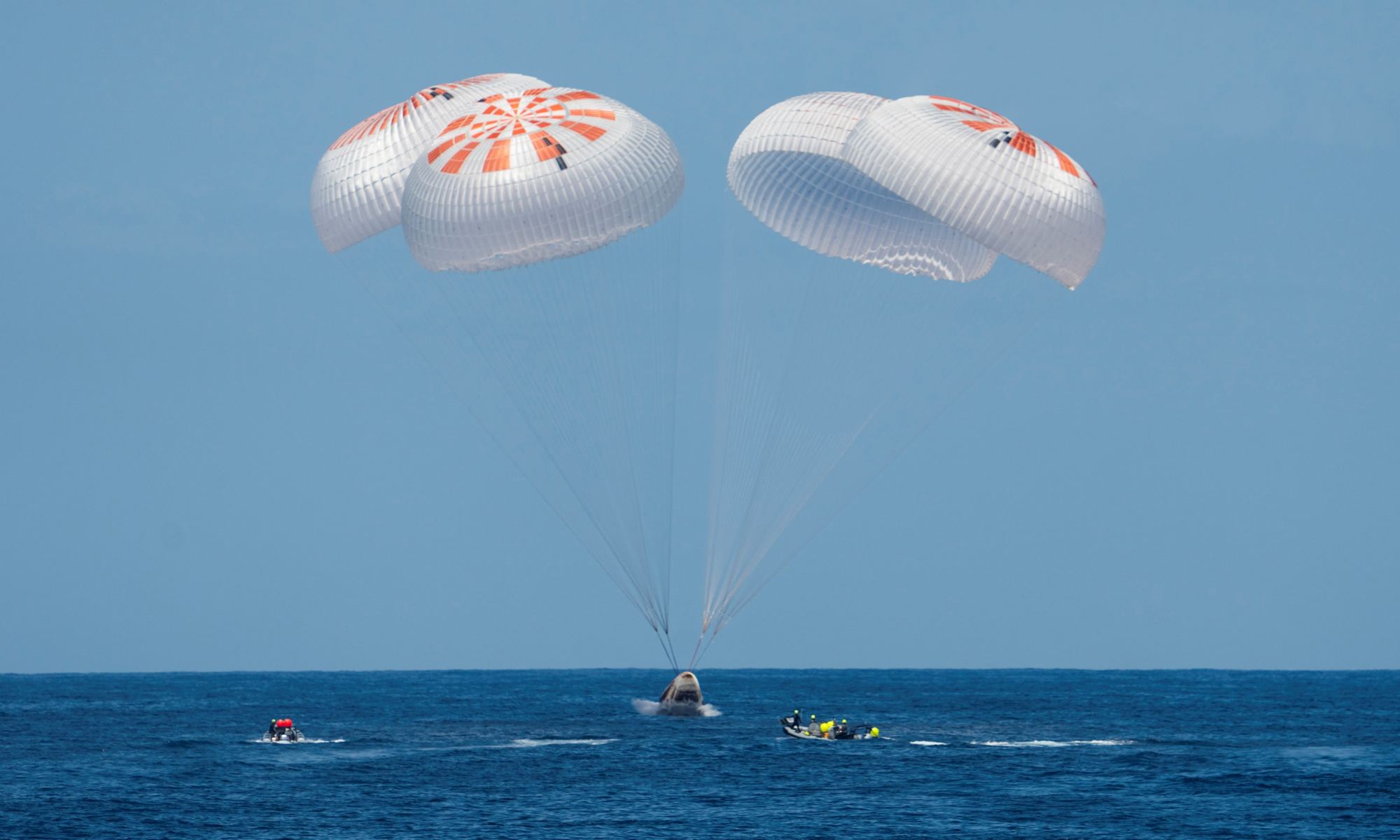
Axiom Space’s first crew of private astronauts is back on Earth after a 17-day orbital trip that included a week of bonus time on the International Space Station. The mission ended at 1:06 p.m. ET (5:06 p.m. GMT) today when SpaceX’s Crew Dragon Endeavour splashed down in the Atlantic Ocean off the coast of Florida.
Former NASA astronaut Michael Lopez-Alegria was the commander for the homeward trip, accompanied by three investors who each paid Axiom $55 million for their rides: Ohio real-estate and tech entrepreneur Larry Connor, who served as the mission pilot, plus Canada’s Mark Pathy and Israel’s Eytan Stibbe.
“Welcome back to planet Earth,” SpaceX’s mission control operator Sarah Gillis told the crew. “The Axiom-1 mission marks the beginning of a new paradigm for human spaceflight. We hope you enjoyed the extra few days in space.”
Axiom-1 began on April 8 with the Florida launch of a SpaceX Falcon 9 rocket. The trip was originally supposed to last about 10 days, but concerns about weather in the splashdown zone delayed the descent. Because of the way their fares were structured, Axiom’s customers didn’t have to pay extra for the extension.
Continue reading “Axiom’s First Astronauts Return From International Space Station”Spot SpaceX’s Crew Dragon After This Weekend’s Historic Launch
How to see SpaceX’s Crew Dragon Demo Two mission in orbit.
Update: As you probably know by now, yesterday’s Crew Dragon Demo-2 launch was scrubbed due to weather violations. This is a tough one, as seas need to be relatively calm along the entire Atlantic launch track, in the event of an abort. The next launch is set for Saturday, May 30th at 3:22 AM EDT/20:33 UT, with a backup launch date of Sunday, May 31st at 3:00 AM EDT/20:00 UT. As it stands, weather prospects for both dates are currently at a 60% chance for launch violation. The weather prospects and sighting graphics in this article are updated to reflect the new launch dates, and of course, we’ll be tracking changes on Twitter as @Astroguyz.
It’s been a long time coming.
Nearly nine years after Space Shuttle Atlantis on mission STS-135 landed at the Kennedy Space Center on July 21st, 2011, crewed missions are about to resume from U.S. soil this week, with the launch of a SpaceX Falcon 9 rocket with the historic Crew Dragon Demo 2 mission, carrying NASA astronauts Douglas Hurley and Robert Behnken to the International Space Station. And with any luck and clear skies willing, you may just be able to spy the mission chasing down the station this weekend.
Continue reading “Spot SpaceX’s Crew Dragon After This Weekend’s Historic Launch”Crew Dragon Exploded Back in April Because of a Nitrogen Tetroxide Leak
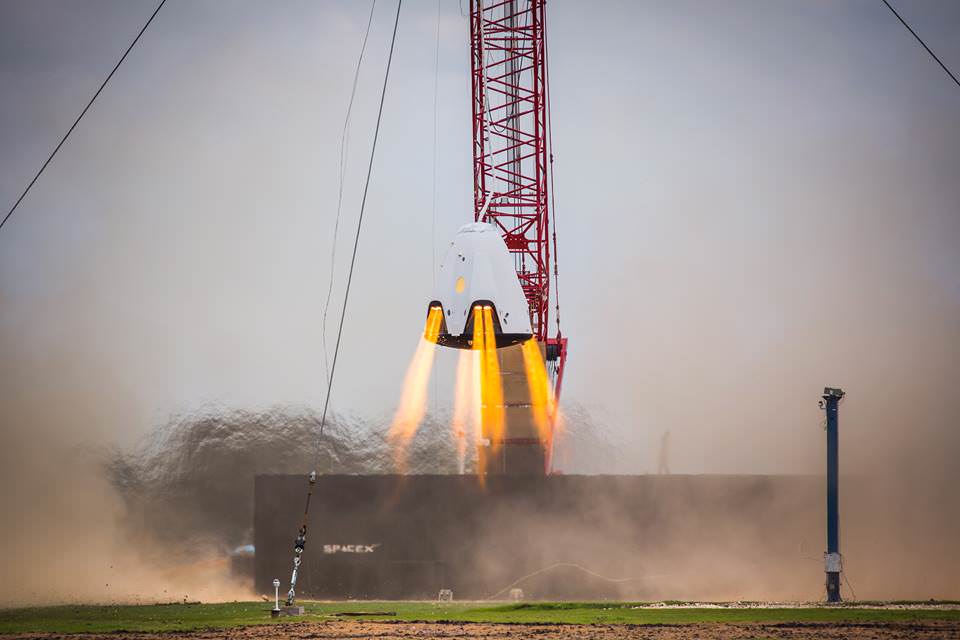
On Saturday, April 20th, 2019, an explosion took place on SpaceX’s Landing Zone 1 at Cape Canaveral Air Force Station in Florida. The company was engaged in a series of static fire engine tests for their Crew Dragon‘s In-Flight Abort test vehicle. This vehicle is essential for crewed missions since it acts as a sort of ejection seat for the crew capsule in the event of an emergency.
While the initial tests of the twelve Draco thrusters on the vehicle were completed successfully, the initiation of the final test of eight SuperDraco thrusters resulted in the destruction of the vehicle. After a thorough investigation, SpaceX has concluded that the explosion was caused by a nitrogen tetroxide leak that occurred just prior to the final test.
Continue reading “Crew Dragon Exploded Back in April Because of a Nitrogen Tetroxide Leak”Ho-Hum. More Boring Success for SpaceX as Crew Dragon Splashes Down
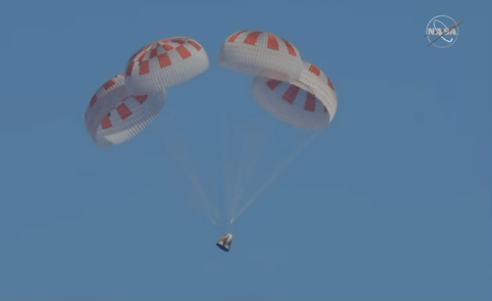
A few hours ago, the SpaceX Crew Dragon splashed down in the Atlantic Ocean, about 200 miles off the coast of Florida. The splashdown is the last act in what has been a successful first flight for the Crew Dragon. The flight, called Demo-1, was launched on March 2nd and spent five days at the International Space Station (ISS).
Continue reading “Ho-Hum. More Boring Success for SpaceX as Crew Dragon Splashes Down”Crew Dragon Rolls Out to the Launch Pad. Demo-1 Flight Should Happen Shortly
The long-anticipated first flight of the SpaceX Crew Dragon is almost here. Early in January, the Crew Dragon was rolled out of its hangar at Kennedy Space Center, and on January 24th it performed a brief static firing as part of its testing. The Crew Dragon’s inaugural flight, called Demo-1, is not far off.
Neither NASA nor SpaceX has given us a date for Demo-1, but we’re getting close.
Continue reading “Crew Dragon Rolls Out to the Launch Pad. Demo-1 Flight Should Happen Shortly”Musk Says Maiden Falcon Heavy to Launch in November, Acknowledges High Risk and Releases New Animation


Before the year is out, the long awaited debut launch of the triple barreled Falcon Heavy rocket may at last be in sight says SpaceX CEO and founder Elon Musk, as he forthrightly acknowledges it comes with high risk and released a stunning launch and landing animation earlier today, Aug. 4.
After years of painstaking development and delays, the inaugural blastoff of the SpaceX Falcon Heavy is currently slated for November 2017 from NASA’s Kennedy Space Center in Florida, according to Musk.
“Falcon Heavy maiden launch this November,” SpaceX CEO and billionaire founder Elon Musk tweeted last week.
“Lot that can go wrong in the November launch …,” Musk said today on Instagram, downplaying the chances of complete success.
And to whet the appetites of space enthusiasts worldwide, just today Musk also published a one minute long draft animation illustrating the Falcon Heavy triple booster launch and how the individual landings of the trio of first stage booster cores will take place – nearly simultaneously.
https://www.instagram.com/p/BXXiVWFgphb/
Video Caption: SpaceX Falcon Heavy launch from KSC pad 39A pad and first stage booster landings. Credit: SpaceX
“Side booster rockets return to Cape Canaveral,” explains Musk on twitter. “Center lands on droneship.”
The two side boosters will be recycled from prior Falcon 9 launches and make precision guided propulsive, upright ground soft landings back at Cape Canaveral Air Force Station, Florida. Each booster is outfitted with a quartet of grid fins and landing legs. The center core is newly built and heavily modified.
“Sides run high thrust, center is lower thrust until sides separate & fly back. Center then throttles up, keeps burning & lands on droneship. If we’re lucky!” Musk elaborated.
The center booster will touch down on an ocean going droneship prepositioned in the Atlantic Ocean some 400 miles (600 km) off of Florida’s east coast.
To date SpaceX first stages from KSC launches have touched down either on land at Landing Zone-1 (LZ-1) at the Cape or at sea on the “Of Course I Still Love You” droneship barge (OCISLY).
The launch of the extremely complicated Falcon Heavy booster with 27 first stage Merlin 1D engines also comes associated with a huge risk – and he hopes that it at least rises far enough off the ground to minimize the chances of damage to the historic pad 39A at the Kennedy Space Center.
“There’s a lot of risk associated with Falcon Heavy, a real good chance that that vehicle does not make it to orbit,” Musk said recently while speaking at the International Space Station Research and Development Conference in Washington, D.C. on July 19.
“I want to make sure to set expectations accordingly. I hope it makes it far enough beyond the pad so that it does not cause pad damage. I would consider even that a win, to be honest.”
Musk originally proposed the Falcon Heavy in 2011 and targeted a maiden mission in 2013.
Whenever it does launch, the Falcon Heavy will become the world’s most powerful rocket.
“I think Falcon Heavy is going to be a great vehicle,” Musk stated. “There’s just so much that’s really impossible to test on the ground, and we’ll do our best.
“Falcon Heavy requires the simultaneous ignition of 27 orbit-class engines. There’s a lot that can go wrong there.”
Designing and building Falcon Heavy has proven to be far more difficult than Musk ever imagined, and the center booster had to be significantly redesigned.
“It actually ended up being way harder to do Falcon Heavy than we thought,” Musk explained.
“At first it sounds real easy! You just stick two first stages on as strap-on boosters. How hard can that be?” But then everything changes. All the loads change, aerodynamics totally change. You’ve tripled the vibration and acoustics. You sort of break the qualification levels on so much of the hardware.”
“The amount of load you’re putting through that center core is crazy because you’ve got two super-powerful boosters also shoving that center core. So we had to redesign the whole center core airframe,” Musk added. “It’s not like the Falcon 9 – because it’s got to take so much load. Then you’ve got separation systems.”
Due to the high risk, there will be no payload from a paying customer housed inside the nose cone atop the center core. Only a dummy payload will be installed on the maiden mission.
However future Falcon Heavy missions have been manifested with commercial and science payloads.
Musk also hopes to launch a pair of paying private astronauts on a trip around the Moon and back as soon as 2018 while journeying inside a Crew Dragon spacecraft with the Falcon Heavy – similar to what his company is developing for NASA for commercial ferry missions to low Earth orbit (LEO) and the International Space Station (ISS).
Falcon Heavy will blast off with about twice the thrust of the Delta IV Heavy, currently the worlds most powerful rocket. The United Launch Alliance (ULA) Delta IV Heavy (D4H) has been the world’s mightiest rocket since the retirement of NASA’s Space Shuttles in 2011.
The Falcon Heavy sports about 2/3 the liftoff thrust of NASA’s Saturn V manned moon landing rockets – last launched in the 1970s.
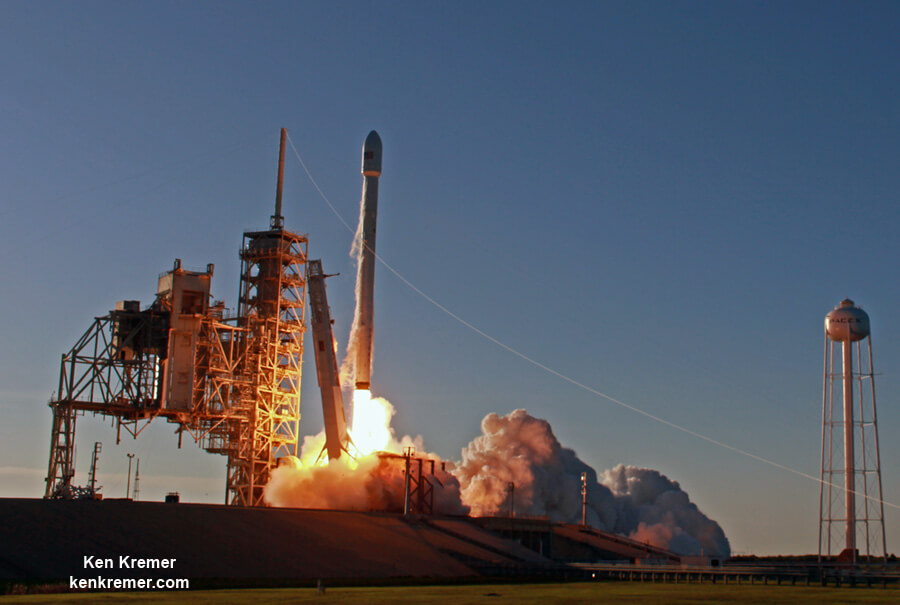
The Falcon Heavy is comprised of three Falcon 9 cores. The Delta IV Heavy is comprised of three Delta Common Core Boosters.
The combined trio of Falcon 9 cores will generate about 5.1 million pounds of liftoff thrust upon ignition from Launch Complex 39A at the Kennedy Space Center in Florida.
“With the ability to lift into orbit over 54 metric tons (119,000 lb)–a mass equivalent to a 737 jetliner loaded with passengers, crew, luggage and fuel–Falcon Heavy can lift more than twice the payload of the next closest operational vehicle, the Delta IV Heavy, at one-third the cost,” according to the SpaceX website.
“The nice thing is when you fully optimize it, it’s about two-and-a-half times the payload capability of a Falcon 9,” Musk notes. “It’s well over 100,000 pounds to LEO of payload capability, 50 tons. It can even get up a little higher than that if optimized.”
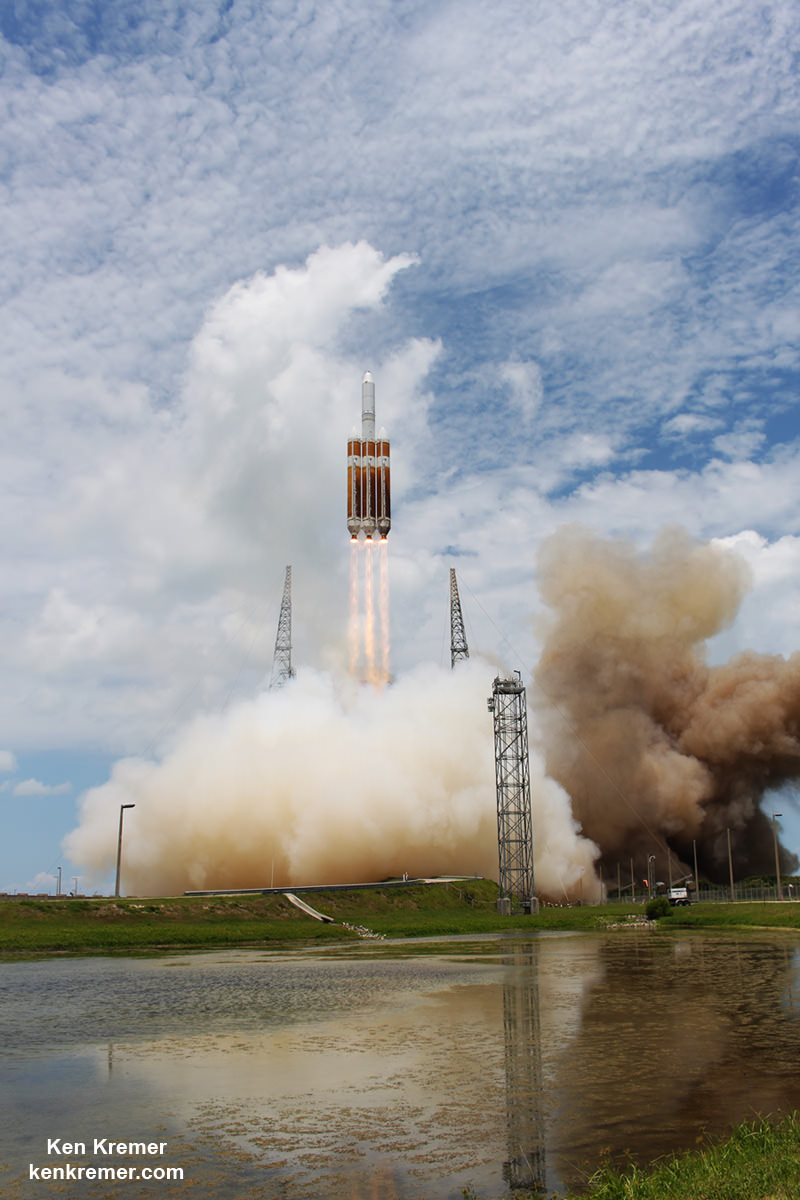
The two stage Falcon Heavy stands more than 229.6 feet (70 meters) tall and is 39.9 feet wide (12.2 meters).
It weighs more than 3.1 million pounds (1.4 million kilograms).
Like the Falcon 9 it will be fueled with liquid oxygen and RP-1 kerosene propellants.
The thunder, power and roar of over 5 million pounds of liftoff thrust from the Falcon Heavy’s 27 engines is absolutely certain to be a thrilling, earth-shaking space spectacular !! Thus placing it in a class of its own unlike any US launch since NASA’s Saturn V and Space Shuttles rocketed to the high frontier from the same pad.
“I encourage people to come down to the Cape to see the first Falcon Heavy mission,” Musk said. “It’s guaranteed to be exciting.”
But before the Falcon Heavy can actually be rolled up to launch position at pad 39A, SpaceX must first complete repairs and refurbishment to nearby pad 40.
That Cape pad was heavily damaged nearly a year ago during a catastrophic launch pad explosion that took place in Sept. 2016 during a routine prelaunch fueling and static fire engine test of a Falcon 9 rocket with the Amos-6 commercial comsat payload bolted on top.
Pad 40 must achieve operational launch status again before SpaceX can commit to the Falcon Heavy launches at Pad 39A. Workers will also need to finish construction work at pad 39A to support the Heavy launches.
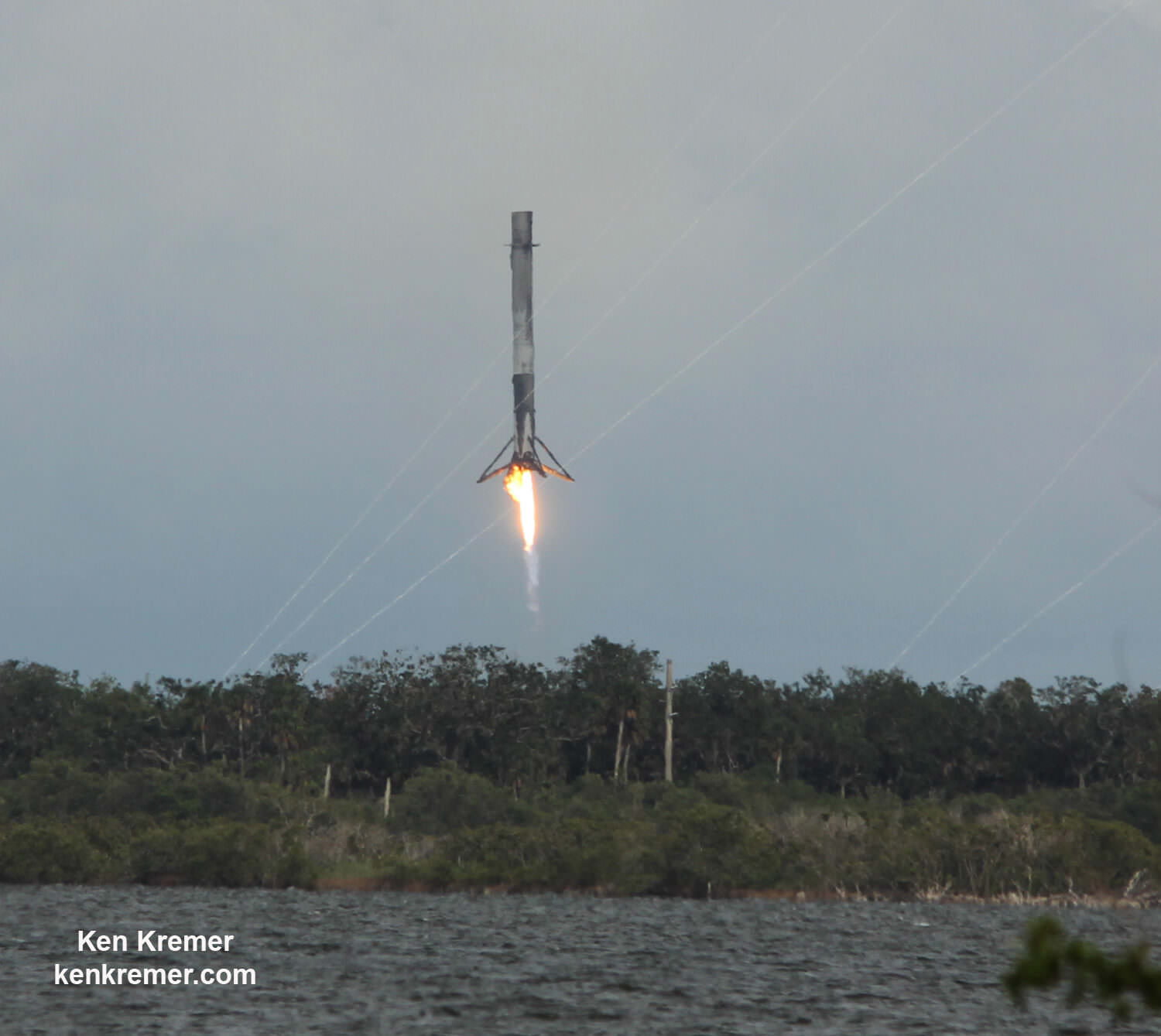
To date SpaceX has successfully demonstrated the recovery of thirteen boosters by land and sea.
Furthermore SpaceX engineers have advanced to the next step and successfully recycled, reflown and relaunched two ‘flight-proven first stages this year in March and June of 2017 from the Kennedy Space Center in Florida involving the SES-10 and BulgariaSat-1 launches respectively.
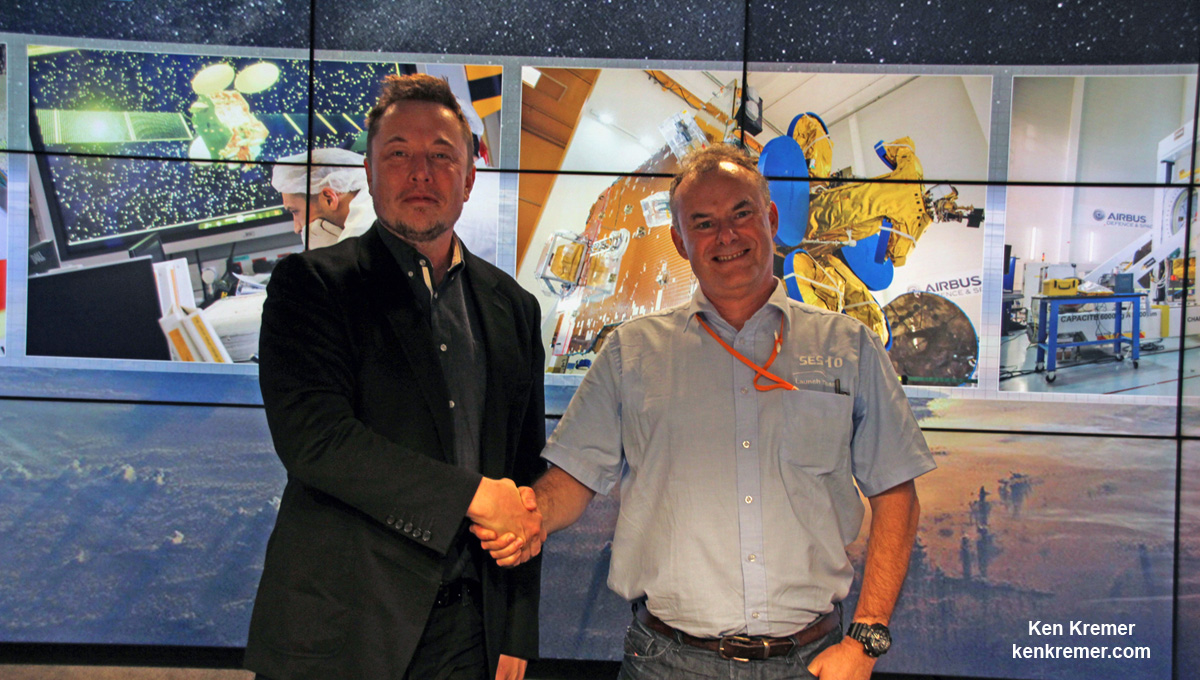
The next SpaceX Falcon 9 launch is slated for Aug. 13 on the NASA contracted CRS-12 resupply mission to the ISS.
Watch for Ken’s onsite space mission reports direct from the Kennedy Space Center and Cape Canaveral Air Force Station, Florida.
Stay tuned here for Ken’s continuing Earth and Planetary science and human spaceflight news.
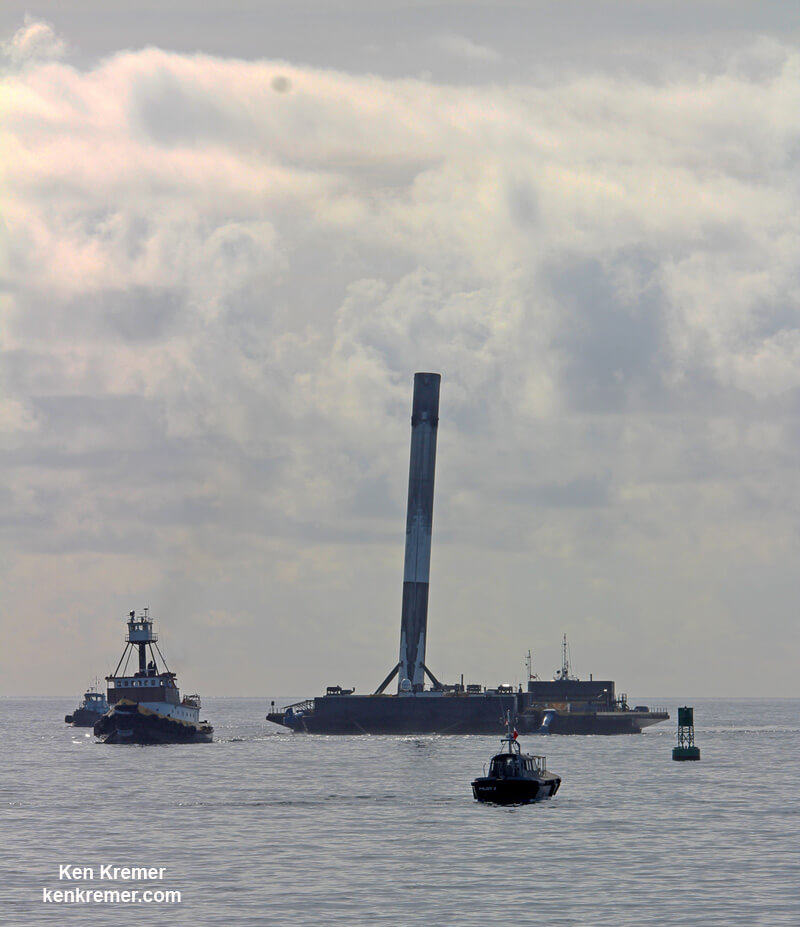
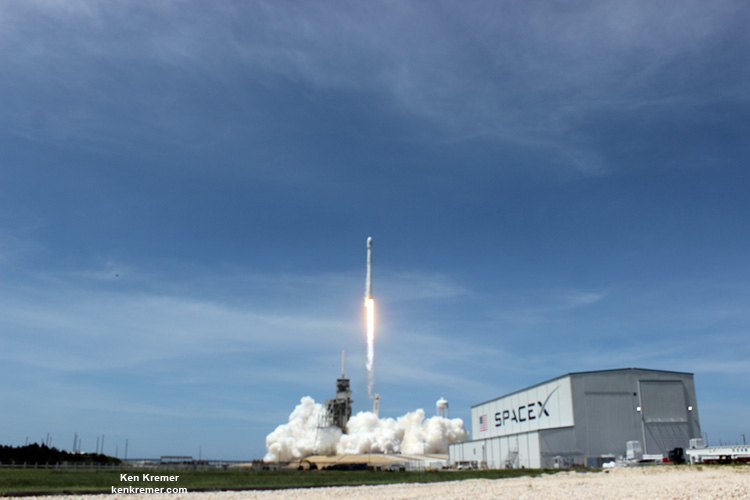
NASA Orders Additional Astronaut Taxi Flights from Boeing and SpaceX to the ISS
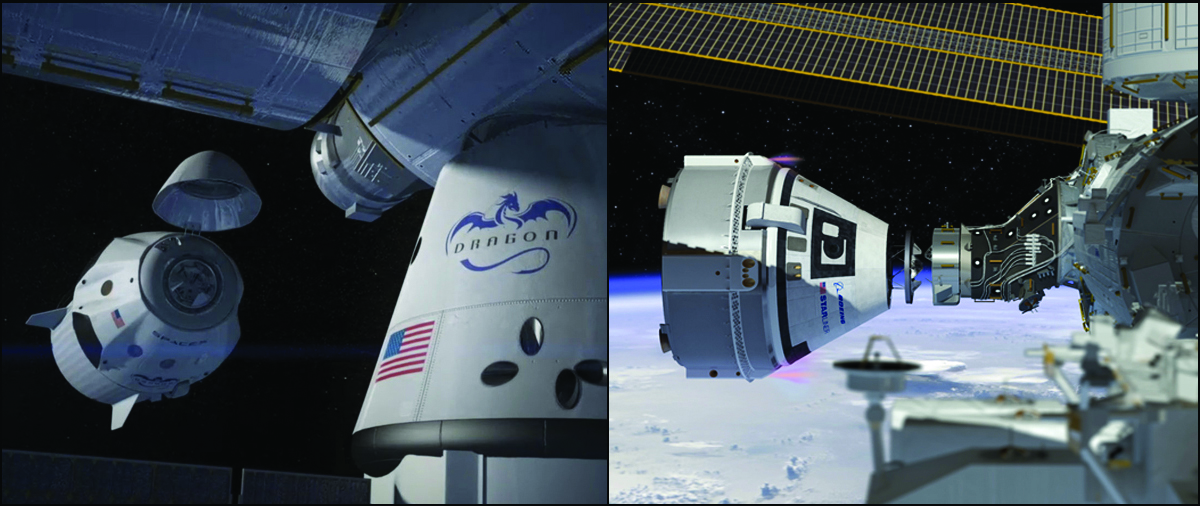

In a significant step towards restoring America’s indigenous human spaceflight capability and fostering the new era of commercial space fight, NASA has awarded a slew of additional astronaut taxi flights from Boeing and SpaceX to carry crews to the International Space Station (ISS).
NASA’s new announcement entails awarding an additional four crew rotation missions each to commercial partners, Boeing and SpaceX, on top of the two demonstration fights previously awarded to each company under the agency’s Commercial Crew Program (CCP) initiative, in a Jan. 3 statement.
However, the newly awarded crew rotation missions will only take place after NASA has certified that each provider is fully and satisfactorily meeting NASA’s long list of stringent safety and reliability requirements to ensure the private missions will be safe to fly with humans aboard from NASA and its partner entities.
And NASA officials were careful to point out that these orders “do not include payments at this time.”
In other words, NASA will pay for performance, not mere promises of performance – because human lives are on the line.
“They fall under the current Commercial Crew Transportation Capability contracts, and bring the total number of missions awarded to each provider to six,” NASA officials announced.
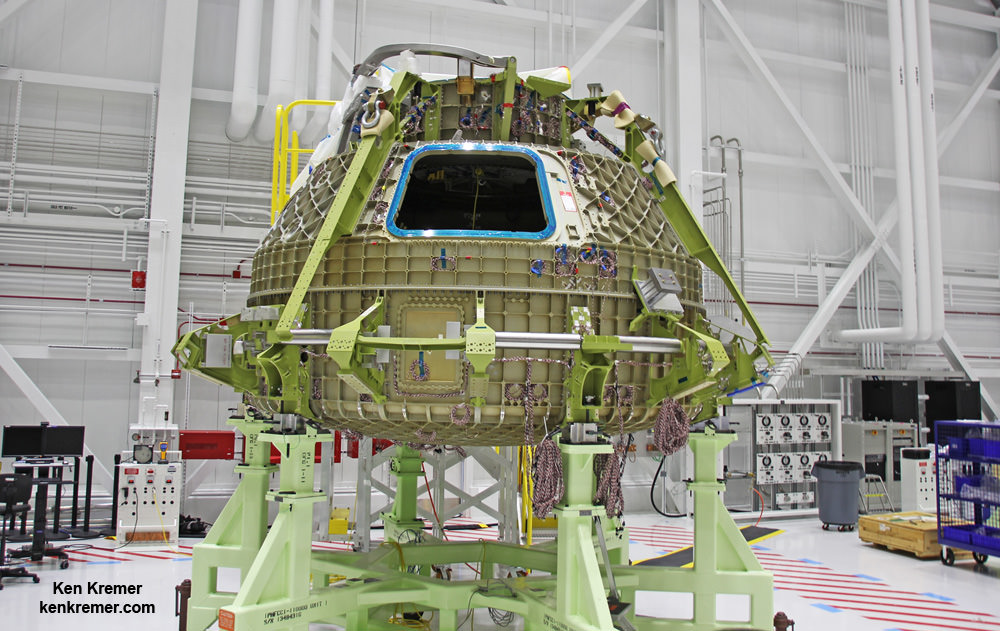
The goal of the CCP program is to ensure robust and reliable crew transportation to the International Space Station in this decade and beyond – using American rockets and capsules launching from American soil.
A further goal is to end America’s sole reliance on Russia for transporting American astronauts to and from the space station using Russia’s Soyuz crew capsules.
Since the forced retirement of NASA’s Space Shuttle’s in July 2011, NASA astronauts and its partners have been 100% dependent on Russia for rides to space – currently to the tune of over $80 million per seat.
By awarding these new contracts, Boeing and SpaceX should be able to plan further ahead in the future, order long lead time hardware and software, and ultimately cut costs through economy of scale.
“Awarding these missions now will provide greater stability for the future space station crew rotation schedule, as well as reduce schedule and financial uncertainty for our providers,” said Phil McAlister, director, NASA’s Commercial Spaceflight Development Division, in a statement.
“The ability to turn on missions as needed to meet the needs of the space station program is an important aspect of the Commercial Crew Program.”
Each spaceship can deliver a crew of four and 220 pounds of cargo, experiments and gear to the million pound science laboratory orbiting Earth at an altitude of appox. 250 miles (400 km). They also serve as a lifeboat in case the occupants need to evacuate the station for any reason.

Boeing and SpaceX were awarded contracts by NASA Administrator Charles Bolden in September 2014 worth $6.8 Billion to complete the development and manufacture of the privately developed Starliner CST-100 and Crew Dragon astronaut transporters, respectively, under the agency’s Commercial Crew Transportation Capability (CCtCap) program and NASA’s Launch America initiative.
The CCP initiative was started back in 2010 under the Obama Administration to replace NASA’s outgoing space shuttle orbiters.
However, launch targets for first fight by the Boeing Starliner and SpaceX Crew Dragon have been repeatedly postponed from 2015 to 2018 – in the latest iteration – due to severe and extremely shortsighted funding cutbacks by Congress year after year.
Thus NASA has been forced to order several years more additional Soyuz taxi seat flights and send hundreds and hundreds of millions of more US dollars to Putin’s Russia – thanks to the US Congress.
Congress enjoys whining about Russia on one hand, while at the same time they put America’s aerospace workers on the unemployment line by curtailing NASA’s ability to move forward and put Americans back to work. There is ample bipartisan blame for this sad state of affairs.
The Boeing Starliner and SpaceX Crew Dragon are both Made in America.
The Boeing Starliner is being manufactured at the Kennedy Space Center inside a repurposed and renovated former Space Shuttle Orbiter Processing hangar. This author has visited the C3PF facility periodically to observe and assess Boeing’s progress.
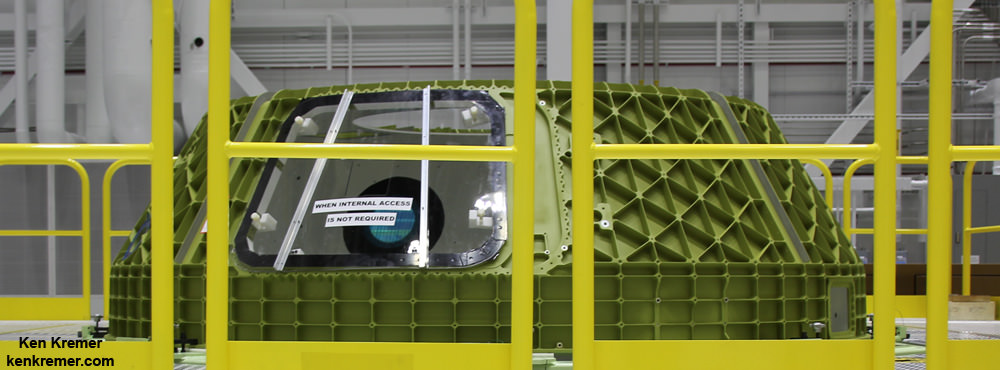
Indeed, Boeing has already started construction of the first flight worthy Starliner – currently dubbed Spacecraft 1- at KSC this past summer 2016.
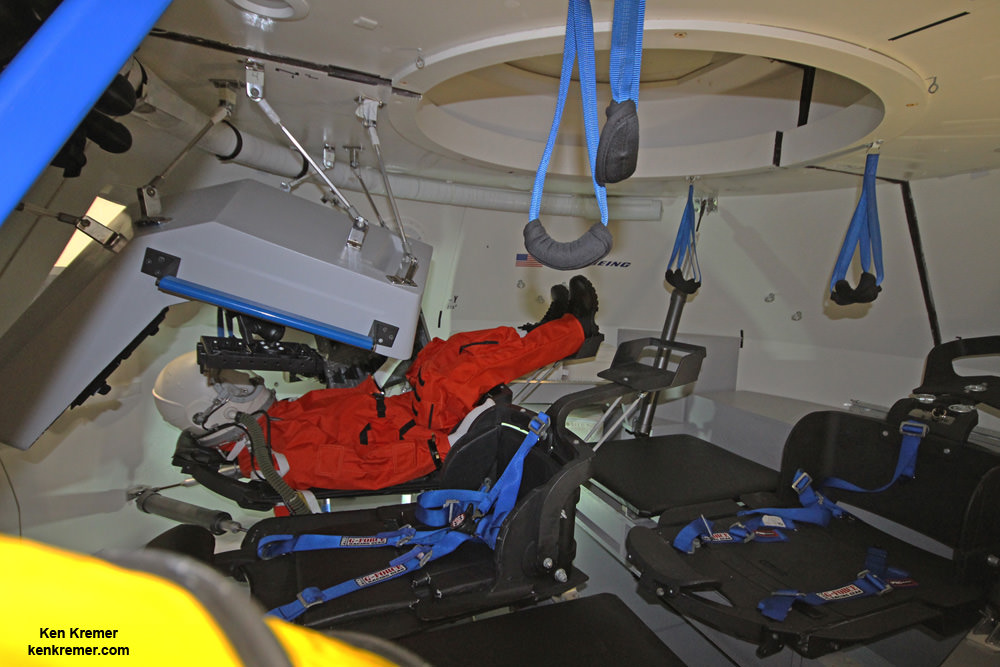
The SpaceX Crew Dragon is being manufactured at company headquarters in Hawthorne, California.
Blastoff of the first SpaceX Crew Dragon spacecraft on its first unmanned test flight, or Demonstration Mission 1, is postponed from May 2017 to November 2017, according to the latest quarterly revision just released by NASA last month in Dec. 2016.
Liftoff of the first piloted Crew Dragon with a pair of NASA astronauts strapped in has slipped from August 2017 to May 2018.
Launch of the first uncrewed Boeing Starliner, known as an Orbital Flight Test, has slipped to June 2018.
Liftoff of the first crewed Starliner is now slated for August 2018, possibly several months after SpaceX. But the schedules keep changing so it’s anyone’s guess as to when these commercial crew launches will actually occur.
Boeing’s uncrewed flight test, known as an Orbital Flight Test, is currently scheduled for June 2018 and its crewed flight test currently is planned for August 2018.
“Once the flight tests are complete and NASA certifies the providers for flight, the post-certification missions to the space station can begin,” NASA official said.
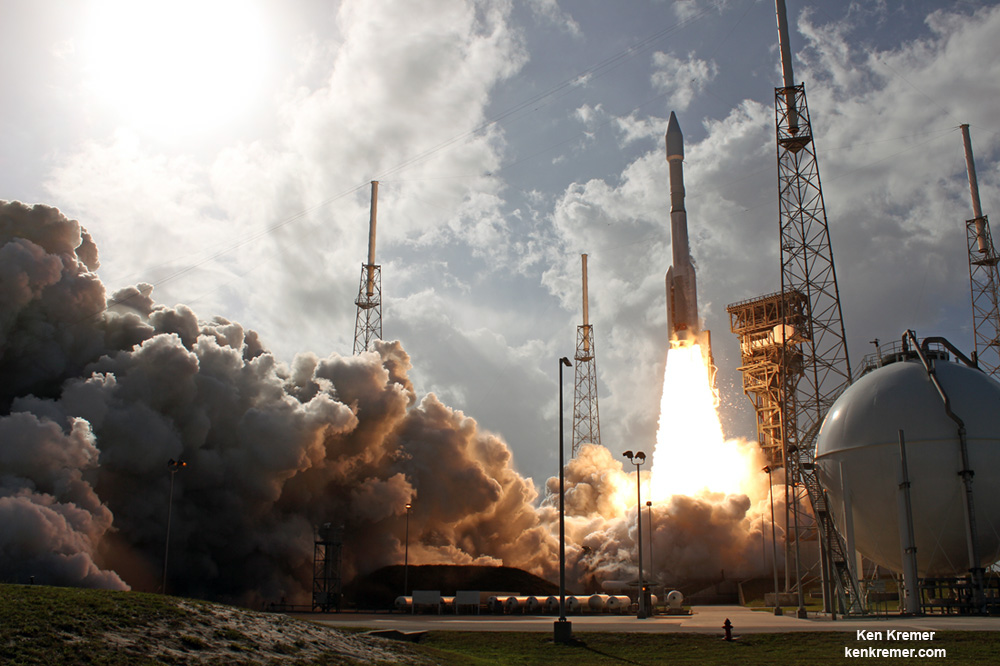
Meanwhile the rockets and launch pads for Boeing and SpaceX are also being developed, modified and refurbished as warranted.
The launch pads for both are located on Florida’s Space Coast.
The Boeing CST-100 Starliner will launch on a United Launch Alliance Atlas V rocket from Space Launch Complex 41 at Cape Canaveral Air Force Station.
The SpaceX Crew Dragon will launch on the company’s own Falcon 9 from Launch Pad 39A at NASA’s Kennedy Space Center.
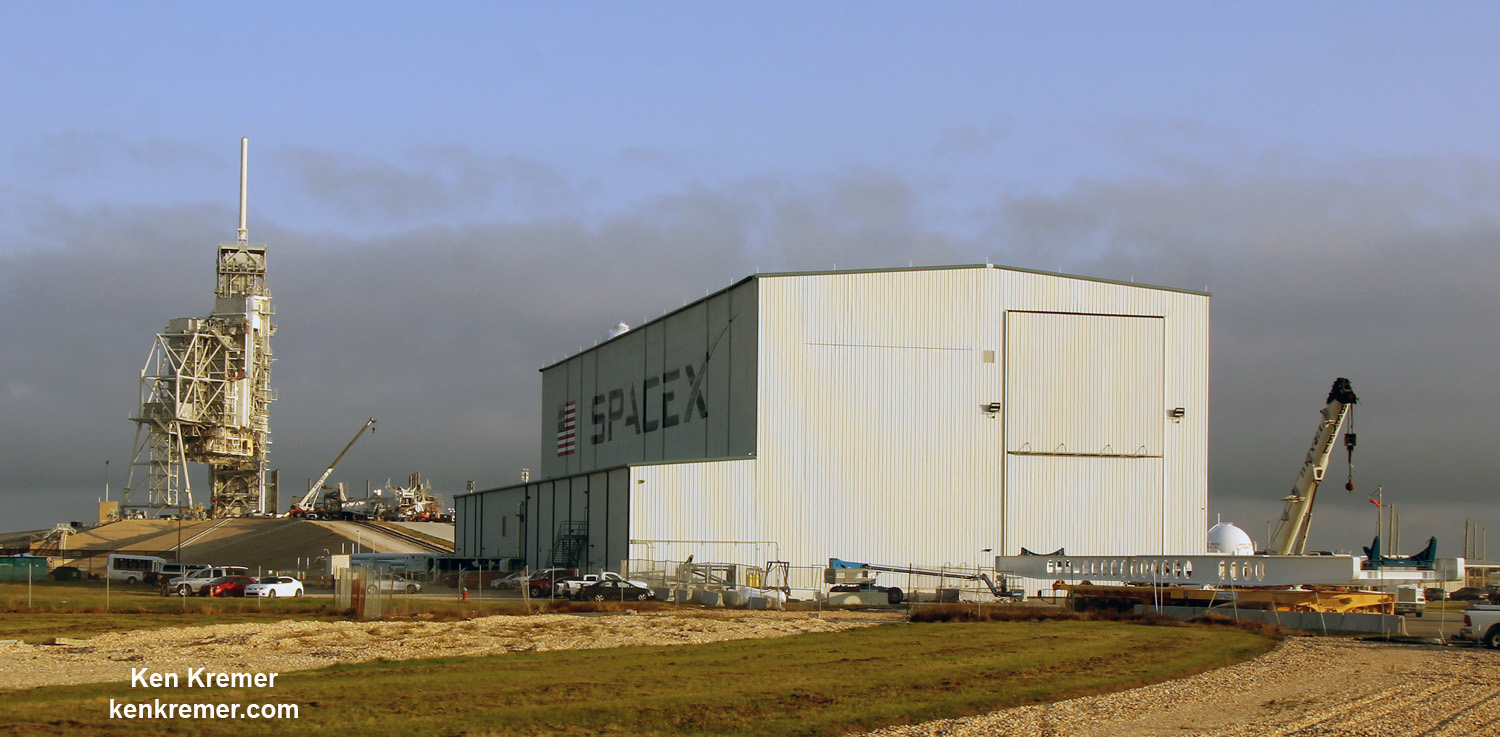
Stay tuned here for Ken’s continuing Earth and Planetary science and human spaceflight news.
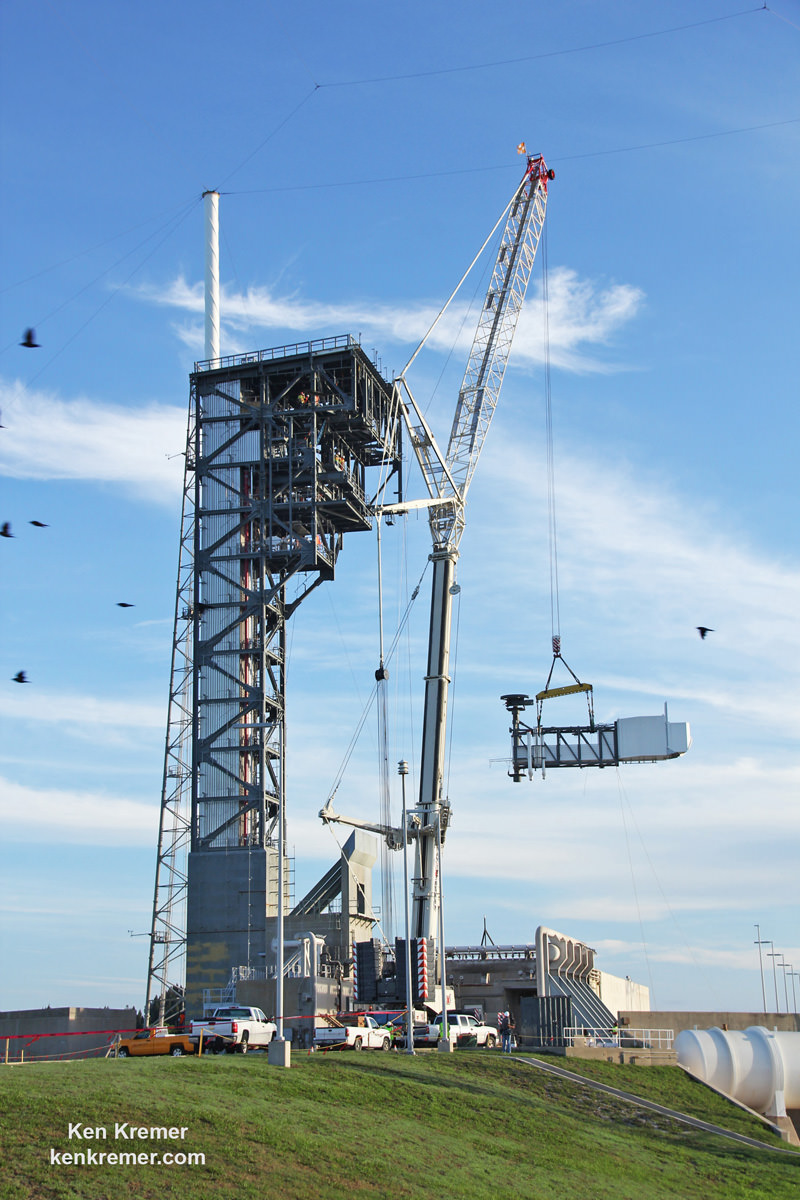
SpaceX and NASA Confirm Delay of First Crewed Dragon Flight to 2018

KENNEDY SPACE CENTER, FL – Launching Americans back to space and the International Space Station (ISS) from American soil on American rockets via NASA’s commercial crew program (CCP) has just suffered another significant but not unexpected delay, with an announcement from NASA that the target date for inaugural crewed flight aboard a SpaceX commercial Crew Dragon has slipped significantly from 2017 to 2018.
NASA announced the revised schedule on Dec. 12 and SpaceX media affairs confirmed the details of the launch delay to Universe Today.
The postponement of the demonstration mission launch is the latest fallout from the recent launch pad explosion of a SpaceX Falcon 9 rocket at Cape Canaveral, Florida, on Sept. 1 during final preparations and fueling operations for a routine preflight static fire test.
Since the Falcon 9 is exactly the same booster that SpaceX will employ to loft American astronauts in the SpaceX Crew Dragon to the space station, the stakes could not be higher with astronauts lives on the line.
Blastoff of the first Crew Dragon spacecraft on its first unmanned test flight is postponed from May 2017 to August 2017, according to the latest quarterly revision just released by NASA. Liftoff of the first piloted Crew Dragon with a pair of NASA astronauts strapped in has slipped from August 2017 to May 2018.
“The Commercial crew updated dates for Demo 1 (no crew) is Q4 2017,” SpaceX’s Phil Larson told Universe Today. “For Demo 2 (with 2 crew members) the updated commercial crew date is Q2 2018 [for Crew Dragon].”

Although much has been accomplished since NASA’s commercial crew program started in 2010, much more remains to be done before NASA will approve these launches.
“The next generation of American spacecraft and rockets that will launch astronauts to the International Space Station are nearing the final stages of development and evaluation,” said NASA KSC public affairs officer Stephanie Martin.
Above all both of the commercial crew providers – namely Boeing and SpaceX – must demonstrate safe, reliable and robust spacecraft and launch systems.
“NASA’s Commercial Crew Program will return human spaceflight launches to U.S. soil, providing reliable and cost-effective access to low-Earth orbit on systems that meet our safety and mission requirements. To meet NASA’s requirements, the commercial providers must demonstrate that their systems are ready to begin regular flights to the space station.”

These latest launch delays come on top of other considerable delays announced earlier this year when SpaceX has still hoping to launch the unpiloted Crew Dragon mission before the end of 2016 – prior to the Sept 1 launch pad catastrophe.
“We are finalizing the investigation of our Sept. 1 anomaly and are working to complete the final steps necessary to safely and reliably return to flight,” Larson told me.
“As this investigation has been conducted, our Commercial Crew team has continued to work closely with NASA and is completing all planned milestones for this period.”
SpaceX is still investigating the root causes of the Sept. 1 anomaly, working on fixes and implementing any design changes – as well as writing the final report that must be submitted to the FAA, before they can launch the planned ‘Return to Flight’ mission from their California launch pad at Vandenberg Air Force Base.
No launch can occur until the FAA grants a license after fully assessing the SpaceX anomaly report.
Last week SpaceX announced a delay in resuming launches at Vandenberg until no earlier than January 2017.
“We are carefully assessing our designs, systems, and processes taking into account the lessons learned and corrective actions identified. Our schedule reflects the additional time needed for this assessment and implementation,” Larson elaborated.
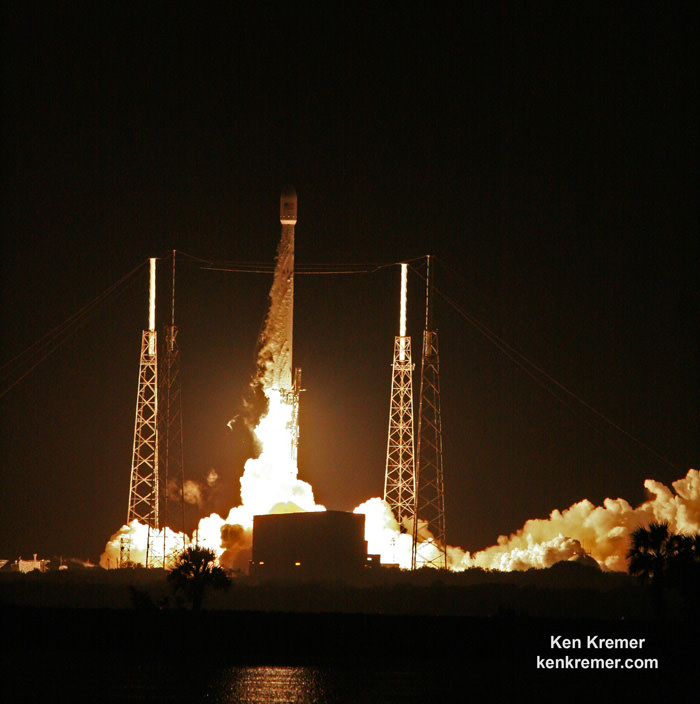
Boeing has likewise significantly postponed their debut unpiloted and piloted launches of their CST-100 Starliner astronaut space taxi by more than six months this year alone.
The first crewed Boeing Starliner is now slated for a launch in August 2018, possibly several months after SpaceX. But the schedules keep changing so it’s anyone’s guess as to when these commercial crew launches will actually occur.
Another big issue that has cropped up since the Sept. 1 pad disaster, regards the procedures and timing for fueling the Falcon 9 rocket with astronauts on board. SpaceX is proposing to load the propellants with the crew already on board, unlike the practice of the past 50 years where the astronauts climbed aboard after the extremely dangerous fueling operation was completed.
SpaceX proposes this change due to their recent use of superchilled liquid oxygen and resulting new operational requirement to fuel the rocket in the last 30 minutes prior to liftoff.
Although a SpaceX hazard report outlining these changes was approved by NASA’s Safety Technical Review Board in July 2016, an objection was raised by former astronaut Maj. Gen. Thomas Stafford and the International Space Station Advisory Committee.
“SpaceX has designed a reliable fueling and launch process that minimizes the duration and number of personnel exposed to the hazards of launching a rocket,” Larson explained.
“As part of this process, the crew will safely board the Crew Dragon, ground personnel will depart, propellants will be carefully loaded and then the vehicle will launch. During this time the Crew Dragon launch abort system will be enabled.”
SpaceX says they have performed a detailed safety analysis with NASA of all potential hazards with this process.
“The hazard report documenting the controls was approved by NASA’s Safety Technical Review Board in July 2016.”
SpaceX representatives recently met with Stafford and the ISS review board to address their concerns, but the outcome and whether anything was resolved is not known.
“We recently met with Maj. Gen. Stafford and the International Space Station Advisory Committee to provide them detailed information on our approach and answer a number of questions. SpaceX and NASA will continue our ongoing assessment while keeping the committee apprised of our progress,” Larson explained.
The Falcon 9 fueling procedure issue relating to astronaut safety must be satisfactorily resolved before any human launch with Dragon can take place, and will be reported on further here.
Whenever the Crew Dragon does fly it will launch from the Kennedy Space Center (KSC) at Launch Complex 39A – the former shuttle launch pad which SpaceX has leased from NASA.
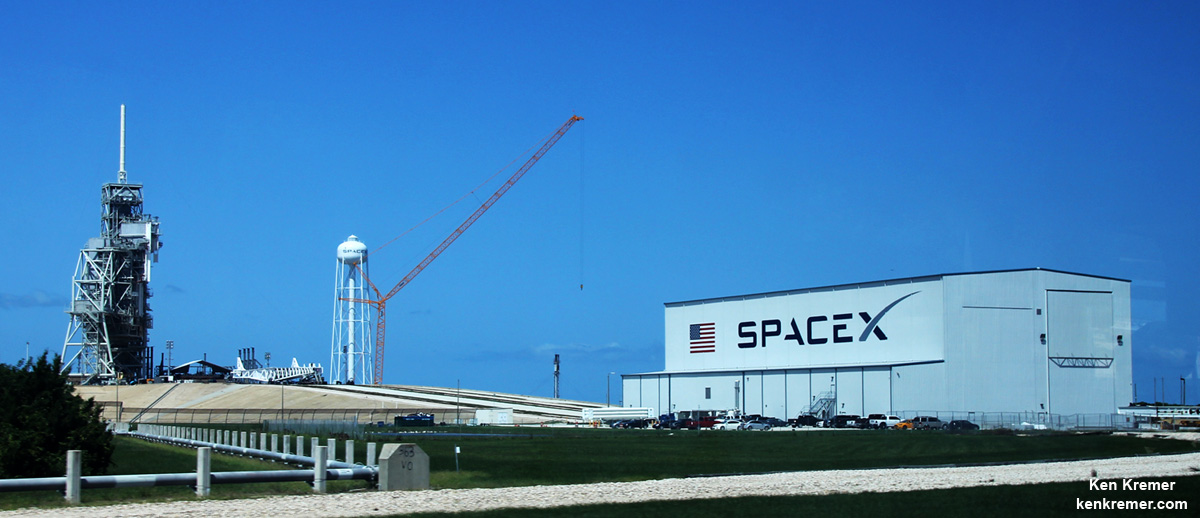
SpaceX is currently renovating pad 39A for launches of manned Falcon 9/Dragon missions. And the firm has decided to use it for commercial missions as well while pad 40 is repaired following the pad accident.
This week a Falcon 9 first stage was spotted entering Cape Canaveral to prepare for an upcoming launch.
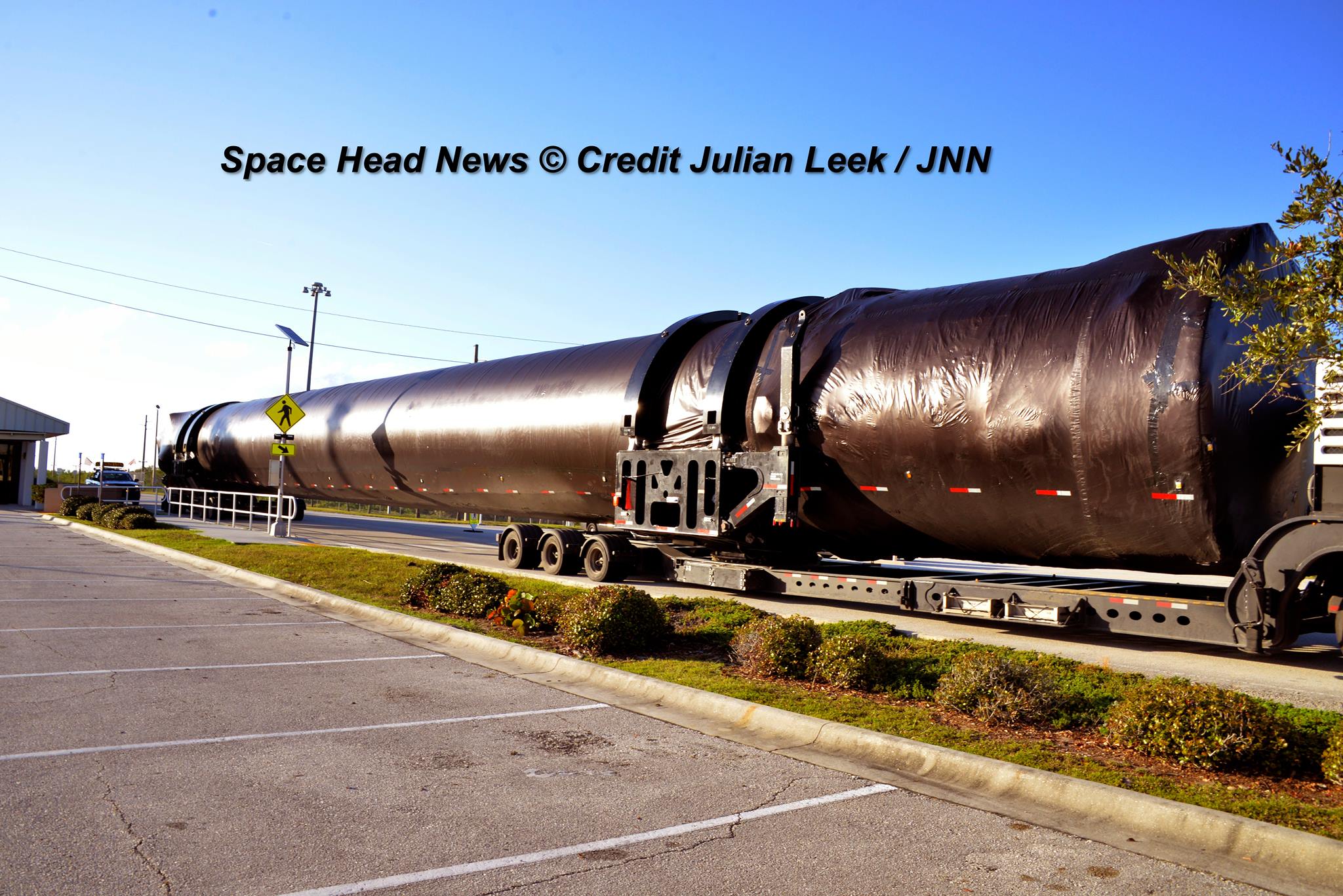
Getting our astronauts back to space with home grown technology is proving to be far more difficult and time consuming than anyone anticipated – despite the relative simplicity of developing capsule-like vehicles vs. NASA’s highly complex and hugely capable Space Shuttle vehicles.
And time is of the essence for the commercial crew program.
Because for right now, the only path to the ISS for all American astronauts is aboard a Russian Soyuz capsule through seats purchased by NASA – at about $82 million each. But NASA’s contract with Roscosmos for future flight opportunities runs out at the end of 2018. So there is barely a few months margin left before the last available contracted seat is taken.
It takes about 2 years lead time for Russia to build the Soyuz and NASA is not planning to buy any new seats.
So any further delays to SpaceX or Boeing could result in an interruption of US and partner flights to the ISS in 2019 – which is primarily American built.
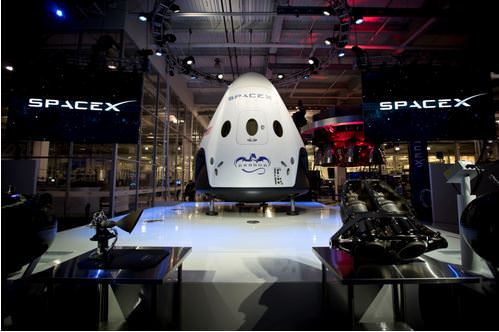
Since its inception, the commercial crew program has been severely and shortsightedly underfunded by the US Congress. They have repeatedly cut the Administration’s annual budget requests, delaying forward progress and first crewed flights from 2015 to 2018, and forcing NASA to buy additional Soyuz seats from Russia at a cost of hundreds of millions of dollars.
Stay tuned here for Ken’s continuing Earth and Planetary science and human spaceflight news.
SpaceX’s Fueling Process Makes NASA Queasy
On September 1st, 2016, SpaceX experienced a rather public setback when one of their Falcon 9 rockets exploded on its launchpad at the Cape Canaveral Launch Complex in Florida. Though the accident resulted in no fatalities or injuries, this accident has since raised concerns over at NASA concerning the company’s safety standards.
Such was the conclusion reached by NASA’s Space Station Advisory Committee, which met on Monday, Oct. 31st, to discuss the accident and make recommendations. In a statement, the committee indicated that SpaceX’s policy of fueling rockets immediately before launch could pose a serious threat to crewed missions.
These concerns have been expressed before, but have become all the more relevant in light of the recent accident. At the time of the explosion, the rocket was already outfitted with its cargo capsule (which contained the Spacecom Amos-6 communications satellite). In the future, SpaceX hopes to send crewed missions into space, which means crews’ lives could be at risk in the event that a similar accident takes place during fueling.
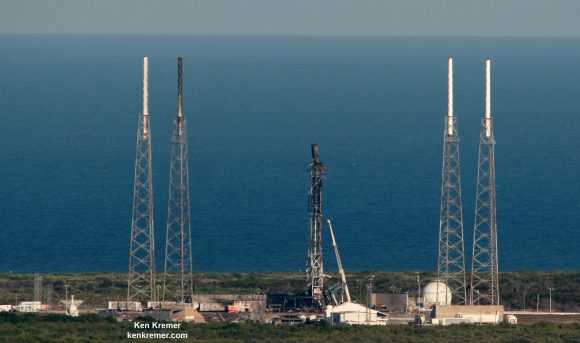
Lt. General Thomas Stafford (USAF), who chaired the committee, was especially emphatic about the need for SpaceX to review its fueling policy. According to The Wall Street Journal, this is the second time that Lt. Gen. Stafford has expressed concerns. The last time was in 2015, when he sent a letter to NASA arguing that the company’s policy of fueling a rocket with its cargo already on board went against decades of procedure.
In the past, NASA has always maintained a policy where a rocket’s cargo is added only after the rocket is fueled. The same goes for crewed missions, where astronauts would board the rocket or Shuttle only after all pre-flight procedures were finished. But in the age of NewSpace, and with private companies offering launch services, things work a little differently.
For example, SpaceX Falcon 9 rocket relies on a combination of liquid oxygen and rocket-grade kerosene propellant, which has less mass than conventional rocket fuel. This lets them pack more fuel into their rockets, and to be able to place larger payloads into orbit. However, this method requires that the rocket be immediately fueled before launch so that the fuel does not have time to warm up and expand.
As a result, future missions – which include crewed ones – will have to be fueled immediately before launch in order to ensure that the rocket’s fuel and lift capacity are not compromised. The Advisory Committee’s recommendations could therefore have a significant impact on how SpaceX does business. However, there recommendations might be a bit premature as far as crewed missions go.
For instance, the Dragon V2 has a crew abort system that was specifically designed for this kind of situation. Relying on the capsule’s eight side-mounted SuperDraco engines, this system is programmed to conduct a propulsive firing in the event of a catastrophic failure on the launchpad. The capsule also comes with a landing chute which will deploy once the rockets are depleted to ensure that it makes a soft landing.
In May of 2015, the company tested this system at the Cape Canaveral Launch Complex, followed by a “propulsive hovering test” in November of that same year. Both tests were successful and demonstrated how the SuperDraco engines are capable of launching the capsule to safety, and that they were capable of keeping the capsule in a state of equilibrium above the ground (see video above).
In addition, SpaceX responded to news of the Advisory Panel and expressed confidence in its procedures, which included fueling and their launch abort system. In an official statement, the full text of which was procured by Universe Today via email, the company said that:
“SpaceX has designed a reliable fueling and launch process that minimizes the duration and number of personnel exposed to the hazards of launching a rocket. As part of this process, the crew will safely board the Crew Dragon, ground personnel will depart, propellants will be carefully loaded over a short period, and then the vehicle will launch. During this time the Crew Dragon launch abort system will be enabled. Over the last year and a half, NASA and SpaceX have performed a detailed analysis of all potential hazards with this process.”
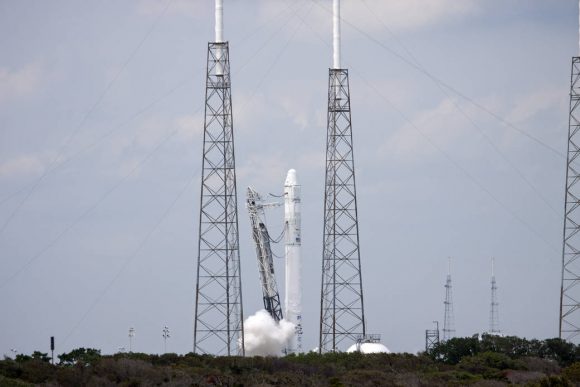
In addition, they cited that prior to the Sept.1st accident, all safety protocols had been followed and NASA had signed off on the launch. But of course, they also expressed that they would continue to comply with all safety procedures, which could include any changes based on the Advisory Committee’s recommendations:
“The hazard report documenting the controls was approved by the NASA’s Safety Technical Review Board in July 2016. As with all hazard analyses across the entire system and operations, controls against those hazards have been identified, and will be implemented and carefully verified prior to certification. There will be continued work ahead to show that all of these controls are in place for crewed operations and that the verifications meet NASA requirements. These analyses and controls will be carefully evaluated in light of all data and corrective actions resulting from the anomaly investigation. As needed, any additional controls will be put in place to ensure crew safety, from the moment the astronauts reach the pad, through fueling, launch, and spaceflight, and until they are brought safely home.”
In the meantime, SpaceX investigators are still attempting to find out exactly what went wrong with the Sept.1st launch. The most recent update (which was made on Oct. 28th) indicated that the company is making headway, and hoping to return to normal operations during the month of November.
“SpaceX’s efforts are now focused on two areas – finding the exact root cause, and developing improved helium loading conditions that allow SpaceX to reliably load Falcon 9,” it states. “With the advanced state of the investigation, we also plan to resume stage testing in Texas in the coming days, while continuing to focus on completion of the investigation.”
Further Reading: WSJ



